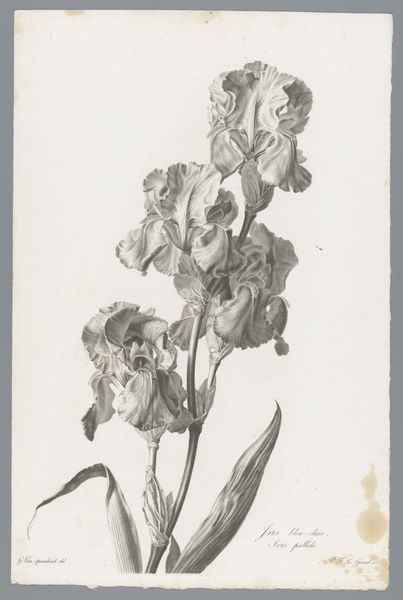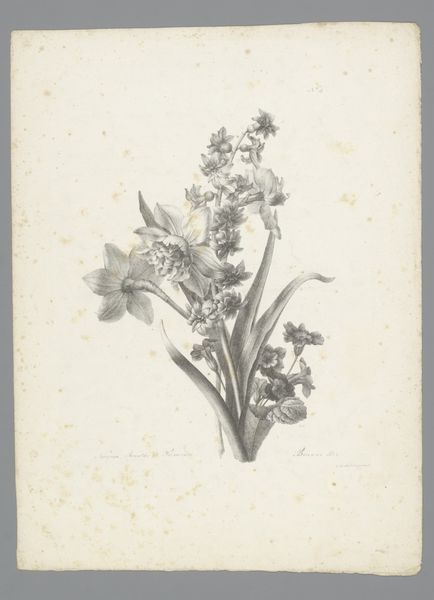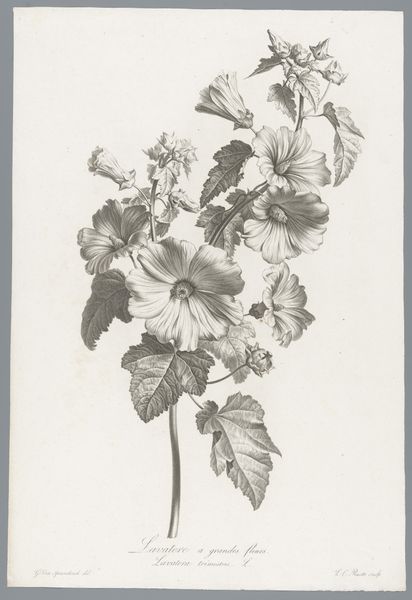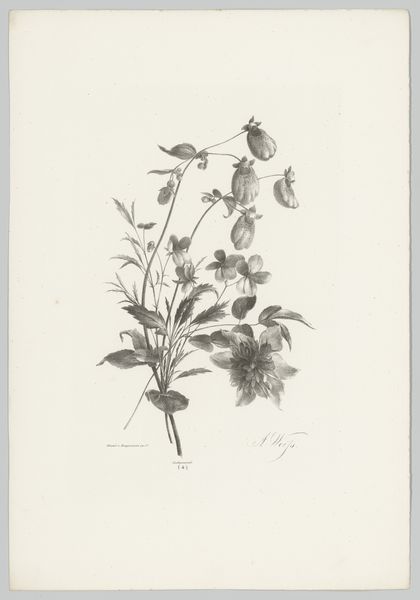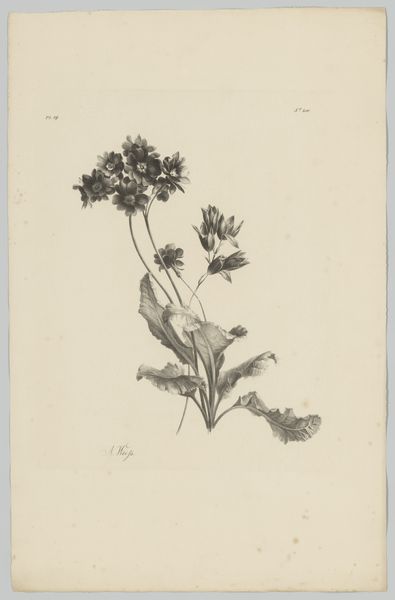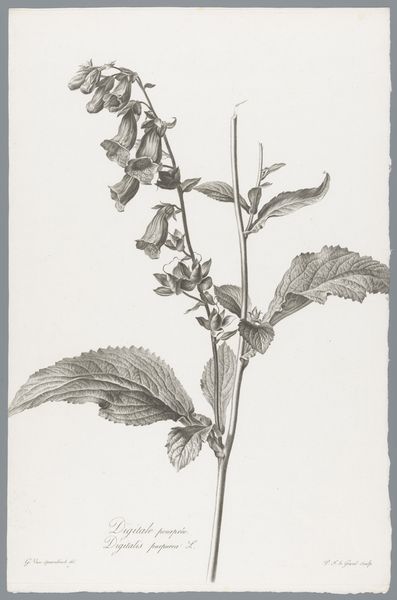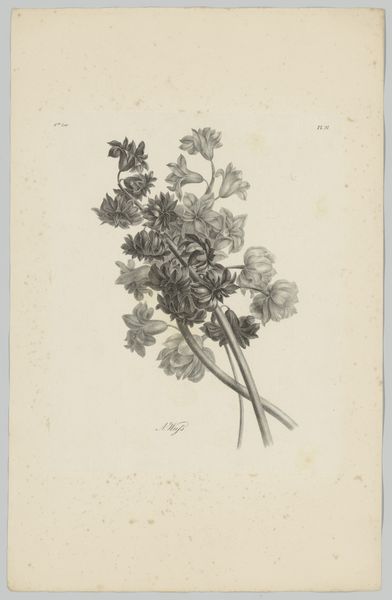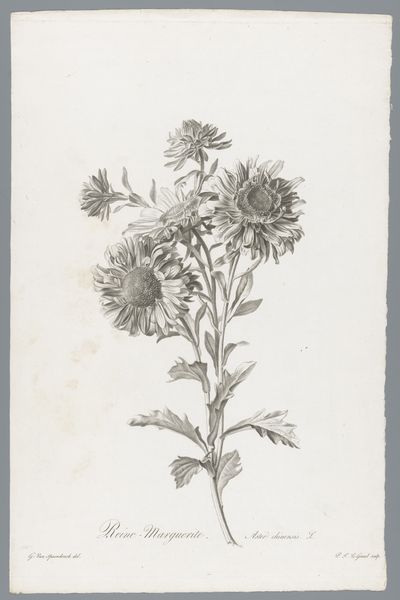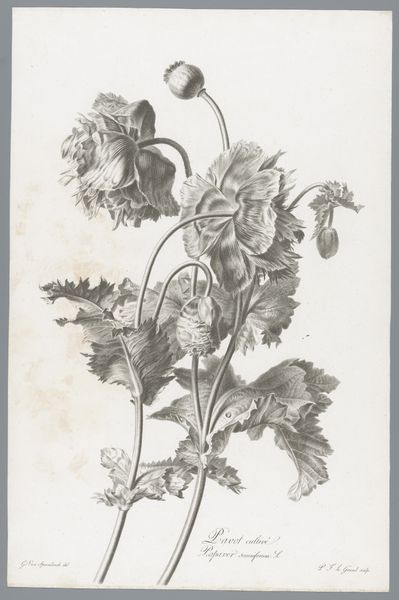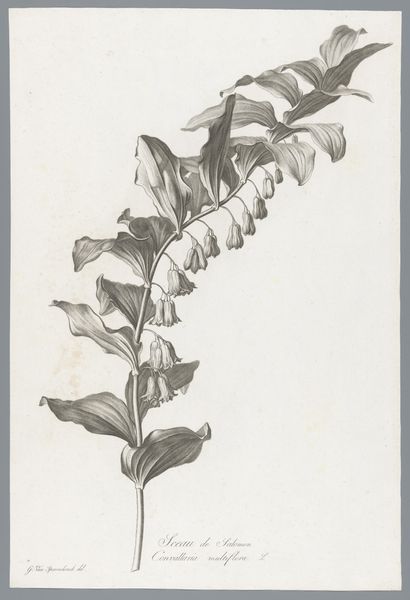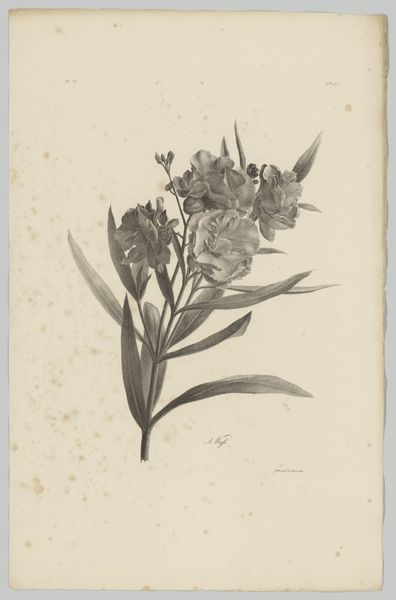
Dimensions: height 491 mm, width 337 mm
Copyright: Rijks Museum: Open Domain
Curator: This is Pierre François Legrand's "Ruig klokje," created between 1799 and 1801. It’s a beautiful botanical illustration, meticulously rendered as an engraving. Editor: It's quite delicate, isn't it? There's an almost ethereal quality to the plant; a real feeling of close observation of detail and natural texture through the hand of the engraver. Curator: Indeed. The style very much fits within the scientific illustration tradition, focused on accuracy. Engravings like these were essential for disseminating botanical knowledge across Europe, a crucial tool within academic art circles of the late 18th century. Editor: And what does the process tell us? I'm fascinated by the transition from, perhaps, Legrand's initial drawings to the final printed image. Each step in the chain of production—the artisan printing the plate, the paper itself—shapes how the wider public experiences this flower. Was this widely distributed, or intended for a more specialist audience? Curator: I think more specialized. The detailed linework suggests an audience of naturalists and fellow artists who would appreciate the nuances of the engraving. Dissemination would likely have been limited to scientific societies or wealthy patrons interested in botany. The role of prints such as these were a key facet of the circulation of knowledge. Editor: You can almost feel the labor embedded in the object. The intense focus demanded in such intricate engraving work. Consider the class dimensions as well; access to that level of skill, the time investment to develop and practice... These details are critical when we begin thinking of its social worth. Curator: I concur, that the art market very often ignores the value and impact of art such as these, as the impact and purpose is one based on utility and scientific means of distributions, opposed to decorative artwork of the same era. Editor: It does invite a renewed appreciation for the craft itself. The level of exactness, that skill of interpreting textures and structures into precise lines... The hand's expertise gives it a remarkable presence. Curator: Indeed. Legrand and other illustrators helped shape the visual language of botany. He offered his readers the image of this wild bellflower to better see, comprehend, and analyze the world around them. Editor: So much in an image – technique, labor, intent, plus the quiet bloom itself. All entangled.
Comments
No comments
Be the first to comment and join the conversation on the ultimate creative platform.

